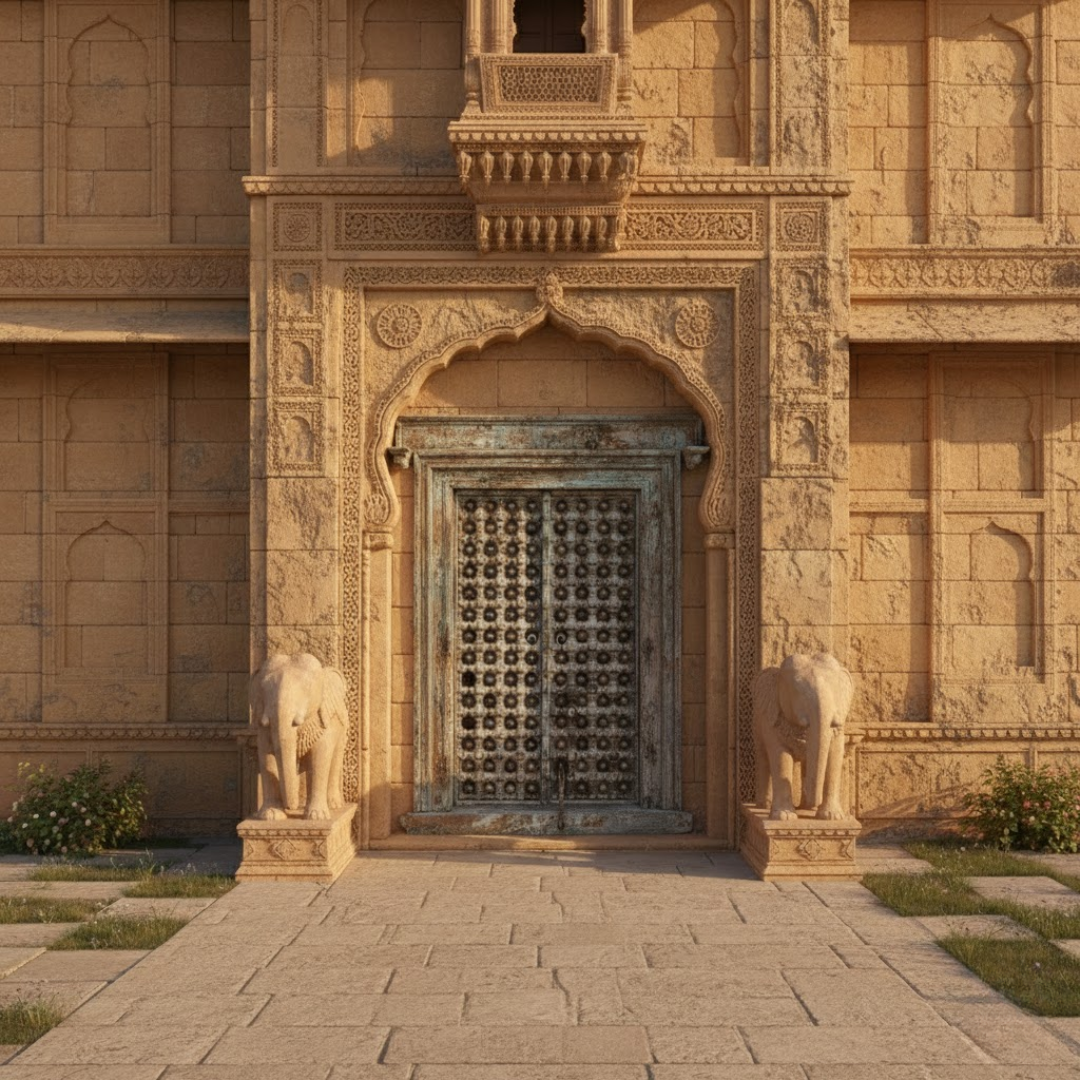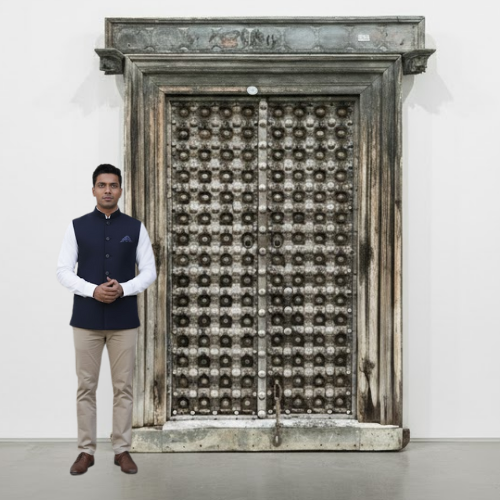
Price
Materials
Period
Place of origin
SKU
Dimensions
Available Stock: 1
About the product
Antique 19th-Century Shekhawati Teakwood Door & Frame
Green Patina | Brass Rosettes | Hand-Forged Ironwork | Circa 1800s Rajasthan
A Portal of Prestige and Protection
This monumental 19th-century teakwood door from Shekhawati, Rajasthan, is a striking example of traditional haveli architecture. Shekhawati, celebrated as the “open-air gallery of Rajasthan,” is known for its merchant mansions adorned with painted frescoes and grand gateways. Salvaged from one such noble haveli, this piece embodies strength, craftsmanship, and timeless artistry.
Handcrafted from solid aged teak, the door is studded with more than 200 repoussé brass rosettes, arranged in a perfect geometric grid. Wrought-iron straps and braces reinforce the structure, showcasing the collaboration between master woodworkers and blacksmiths of the era. Over time, the surface has developed a remarkable green patina with layers of oxidation and faint traces of its original indigo pigment, adding depth and character to the wood’s texture. The carved frame, complete with scalloped lintel brackets, adds architectural presence and authenticity.
Architectural Elegance & Key Features
Original 19th-century Shekhawati door and frame
Rare natural green patina formed over time
Over 200 hand-hammered brass rosettes in grid formation
Hand-forged ironwork including straps, hinges, and ring pulls
Solid teakwood frame with carved moulding and scalloped corbels
Height exceeding 2.6 metres, ideal as a statement installation
Preserved surface wear and patina for authentic historical depth
Why Collectors Value This Piece
✔ Authentic provenance from a Shekhawati haveli
✔ Exceptional craftsmanship in teak, brass, and iron
✔ One-of-a-kind patina developed naturally over two centuries
✔ Monumental scale that commands presence in any setting
✔ Sustainably reclaimed and restored with integrity
Styling Inspiration
Indoor Use
Install as a statement entrance or interior partition
Mount as an architectural wall feature with uplighting
Repurpose as a luxury headboard or backdrop in boutique interiors
Covered Outdoor Use
Frame a courtyard entrance, garden pavilion, or veranda
Suitable for semi-covered settings (teak naturally resists humidity)
Cultural Significance
In Rajasthan’s grand havelis, doors like this symbolised strength, prosperity, and spiritual protection. The gridded brass rosettes represented divine energy and warded off negativity, while the combination of teak, brass, and iron reflected both durability and devotion. Every mark, dent, and patina layer tells a story of centuries of passage, faith, and craftsmanship.
Specifications
Origin: Shekhawati, Rajasthan, India
Era: Mid to Late 19th Century
Material: Solid teakwood with brass and wrought-iron detailing
Dimensions: Width 216 cm × Height 265 cm × Depth 48 cm (including frame)
Weight: Approx. 450 kg
Condition: Structurally sound, with original hardware and aged patina
Delivery & Collection
Due to its size and weight, this piece qualifies for specialist or white-glove delivery across the UK. Local collection is also available by appointment. International buyers and design professionals can contact Regen Bespoke for export support and logistics coordination.
Exclusively at Regen Bespoke
Where centuries-old craftsmanship meets modern curation — a true heirloom of Shekhawati’s architectural legacy.








